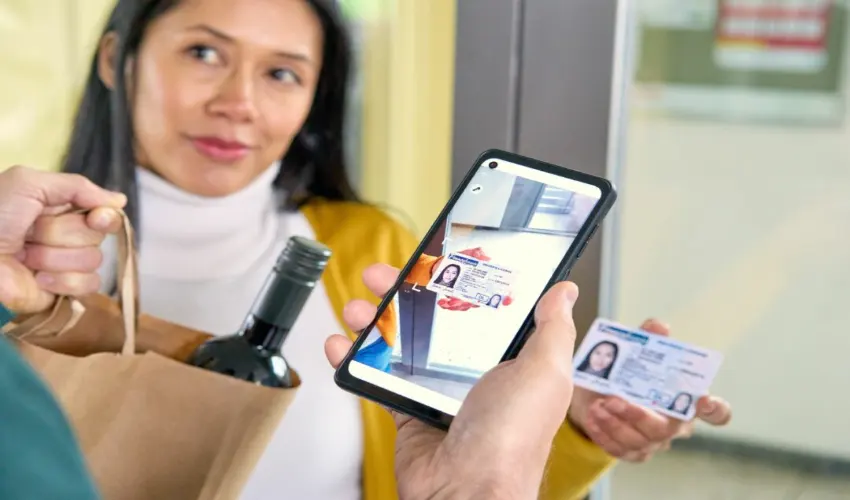The rise of fake identification cards has become a significant issue in various industries, including hospitality, retail, and security. Advanced technology has made it easier for counterfeiters to produce scannable fake IDs that appear highly authentic. However, there are several effective methods to verify these IDs quickly and accurately. This article explores key techniques to help individuals and businesses detect fake IDs efficiently.
- Examine the Physical Features
Before Scannable ID, a manual inspection is necessary. Genuine IDs have high-quality printing, fine microprint details, and specific security features such as holograms, UV markings, and tactile elements. Fake IDs may have smudged text, incorrect fonts, or missing security elements.
- Check the Material: Authentic IDs are made of polycarbonate or Teslin, whereas many fake IDs use cheap plastic.
- Inspect the Edges: Real IDs have smooth, machine-cut edges, while fake ones might have uneven or rough edges.
- Feel the Surface: Raised text or other tactile features should be present on real IDs, which counterfeiters often fail to replicate.
- Utilize an ID Scanner
Many fake IDs are marketed as “scannable,” meaning they contain barcode or magnetic strip data. However, scanning an ID can quickly reveal inconsistencies between the printed information and embedded data.
- Use a Reliable ID Scanner: An ID scanner will read the barcode data and display the encoded information. If it differs from the printed details, the ID is likely fake.
- Check for Data Formatting Issues: Official IDs follow specific formatting rules. If a scanner displays irregular or incomplete data, this is a red flag.
- Verify Expiration Dates and License Numbers: Anomalies in expiration dates or incorrect state-issued numbers can indicate forgery.
- Examine the Barcode and Magnetic Strip
- Barcode Design: Fake IDs often have improperly formatted barcodes that do not match government-issued standards.
- Magnetic Strip Test: Swipe the card through a magnetic reader. If no data is retrieved or if the data does not match the printed details, the ID is fraudulent.
- Cross-Check Information: If possible, compare the barcode data with official databases to confirm authenticity.
- Use Ultraviolet (UV) Light Inspection
Most government-issued IDs contain UV-sensitive elements that glow under blacklight. These features include embedded patterns, symbols, or state seals that counterfeiters struggle to replicate.
- Shine a UV Light on the ID: If there are no glowing security features, the ID may be fake.
- Compare with a Verified ID: If possible, compare with a legitimate ID from the same state to see if security elements match.
- Check the Holograms and OVI (Optically Variable Ink)
Many real IDs have holograms or optically variable ink (OVI) that shift colors when tilted.
- Tilt the ID at Different Angles: Authentic IDs will display multi-colored holograms and shifting ink.
- Look for Blurry or Static Holograms: Fake IDs often have holograms that appear static, blurry, or misaligned.
- Assess the Microprinting and Fine Details
Microprinting is a security feature that includes tiny text or patterns, which are difficult to replicate accurately.
- Use a Magnifying Glass: Genuine IDs have clearly legible microprint that counterfeiters often fail to replicate.
- Inspect for Blurry or Missing Microprint: If fine details are missing or appear smudged, the ID is likely fake.
- Compare with a Reference Database
Many businesses and security agencies have access to reference databases that contain samples of legitimate idzone.
- Match the ID to an Official Sample: Compare fonts, spacing, and security features with an official version.
- Look for Outdated Designs: Some counterfeiters use outdated designs that no longer match the current ID format for a specific state or country.
- Cross-Check Personal Information
Engaging with the ID holder can help detect inconsistencies in their personal information.
- Ask Simple Verification Questions: Request details like their ZIP code, birthdate, or middle name to see if they hesitate.
- Observe Their Reaction: Nervous behavior or hesitation when providing information may indicate dishonesty.
- Check for Mismatched Signatures: If possible, compare the signature on the ID with another document the individual provides.
- Verify Through Government Databases
Certain industries, such as banking and law enforcement, have access to official government databases for ID verification.
- Use Authorized Software: Some ID verification software can cross-reference government-issued ID databases.
- Confirm with Local Authorities: If suspicions persist, reporting the ID to law enforcement can provide definitive verification.
- Train Employees and Use AI-Based Verification
Ensuring that employees are well-trained in ID verification techniques can reduce the risk of accepting fake IDs.
- Conduct Regular Training: Provide employees with updated information on spotting counterfeit IDs.
- Utilize AI Verification Tools: Some businesses use AI-powered ID verification systems to detect inconsistencies automatically.
- Stay Updated on New Counterfeiting Techniques: Fraudsters continuously improve their methods, so staying informed is crucial.
Final Thoughts
As counterfeit ID technology advances, businesses and security personnel must adapt to detect fraudulent IDs effectively. By combining manual inspection techniques with technology such as barcode scanners, UV lights, and AI-based verification, individuals can quickly and accurately identify fake IDs. Consistently training staff and staying updated on the latest counterfeiting methods can further enhance detection capabilities. Vigilance and proper verification processes are essential to preventing fraudulent activities and ensuring compliance with legal standards.
